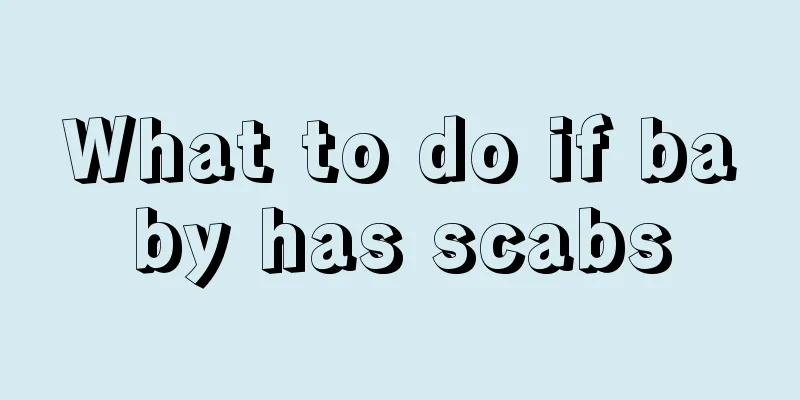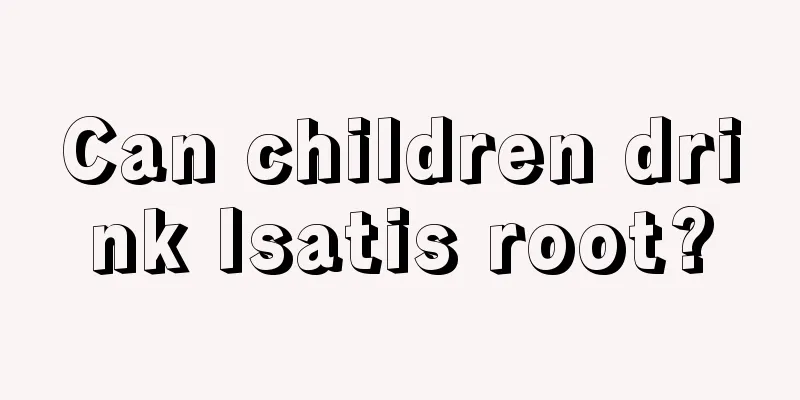Baby's growth process every month

|
When babies are young, the changes as time goes by are very obvious, and the babies change very quickly. Parents should understand the changes in their baby at each stage so that they can better assist their baby's growth. After the baby is born, in just a few months, the baby can learn to crawl, sit, and slowly begin to learn to stand, walk and talk. So, what is the baby's growth process like each month?
When being held, the head can remain in an upright position for a short time. When the mother puts her finger into the baby's palm, he immediately grabs it. Responds to mother's voice. Brightly colored toys can be seen hanging overhead. 2. Two months When a baby is picked up, his head will sway as he tries to maintain an upright position. Babies laugh when someone teases them. Can make sounds like "ah", "oh", and "hmm". Will use eyes to track toys that move in front of him. 3. Three months The baby's head moves randomly. When the baby lies on his stomach in the bed, his head can be raised and his upper body can be supported by his elbows. When you hold your baby upright, he will lift one leg and take a step, then lift the other leg and take a step. Start paying attention to the toy you hold. Getting to know my mother. 4. Four months Children's movements are mostly symmetrical. When the child is supported, his legs can support his body. Often puts toys in hand into mouth. He often grabs his clothes and pulls them over his head. Often chewing fingers.
The child can turn over easily. In prone position, there are signs of wanting to crawl. Keep your back straight when sitting. Like to repeat an action over and over again. 6. Six months While lying on your back, you can lift your head and legs. While lying prone, you can slightly lift your head and legs at the same time. You can sit in a chair. You can sit on the ground with your hands for support. You can play with the toy with both hands at the same time. The eyes begin to pay attention to the movements of the hands. 7. Seven months When lying prone, he can use one hand to pick up the toy in front of him. When lying on your back, you can put your feet in your mouth to chew them or play with your toes with your hands. Can pass toys from one hand to another or put them into the mouth to chew. Able to say fixed sounds such as “da, da”. Begins to recognize strangers.
Can sit independently for about 1 minute. You can lie down from a sitting position and start crawling. You can stand by holding the bed rails. Often chews toys with mouth. Outdoors, children begin to pay attention to the people and things around them. 9. Nine months You can sit there for up to 10 minutes. Able to stand and walk along the bed rails. When his name is called, he answers. 10. Ten months Can sit still for a longer period of time. Toys that can be hit with hands or stacked on the table. Can say simple sentences like dad, mom, etc. 11. Eleven to twelve months Being able to turn your body freely while sitting. Able to stand independently. Can walk with hand support. You can pass the toy in your hand to others, but don't let go. Likes to talk in a toot and chirp sound. |
<<: What to do if your 10-month-old baby can't roll over
>>: How to take care of a two-month-old baby
Recommend
Baby Chinese Medicine Massage
There are many treatment methods in Traditional C...
What can children eat to supplement iron deficiency quickly?
When a child's body lacks iron, his skin will...
What should I do if my baby has repeated fever due to viral infection?
Some babies are suffering from diseases, so they ...
Junior high school summer vacation schedule
Developing good work and rest habits is of great ...
Is breast development normal for a nine and a half year old girl?
Parents believe that their children will develop ...
What are the symptoms of sleepwalking in children?
Many parents will find that sleepwalking occurs m...
Treatment of stage 1 retinopathy of prematurity
Premature babies are not as healthy as full-term ...
What should I do if my baby becomes red and swollen after vaccination?
After the baby is born, he begins to develop cont...
Symptoms of shrimp allergy in babies
Since babies have weak resistance, even a small c...
The importance of children's independence
For parents, the task of educating and raising ch...
Symptoms of spleen deficiency in nine-month-old babies
Nine-month-old babies are relatively young and ve...
Symptoms of bronchitis in four-year-old baby
Bronchitis is a disease that afflicts many elderl...
What are the symptoms of intellectual disability in 3-year-old children?
Everyone has intelligence, and it is with its hel...
One year old baby poop smells bad
A one-year-old baby is still in the period of nee...
How to treat pneumonia in babies?
Children are most likely to get sick when the sea...









